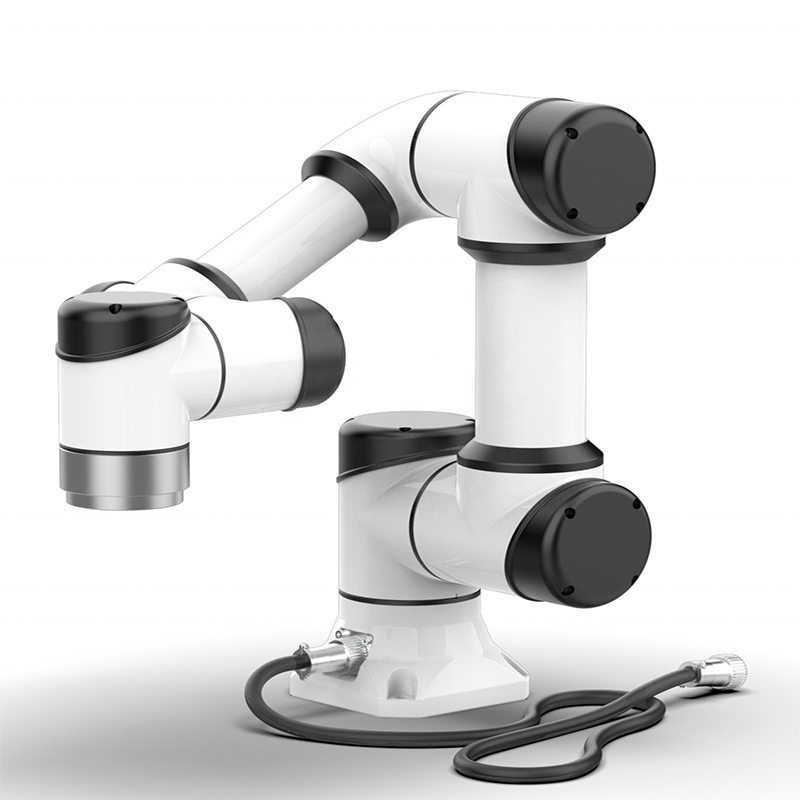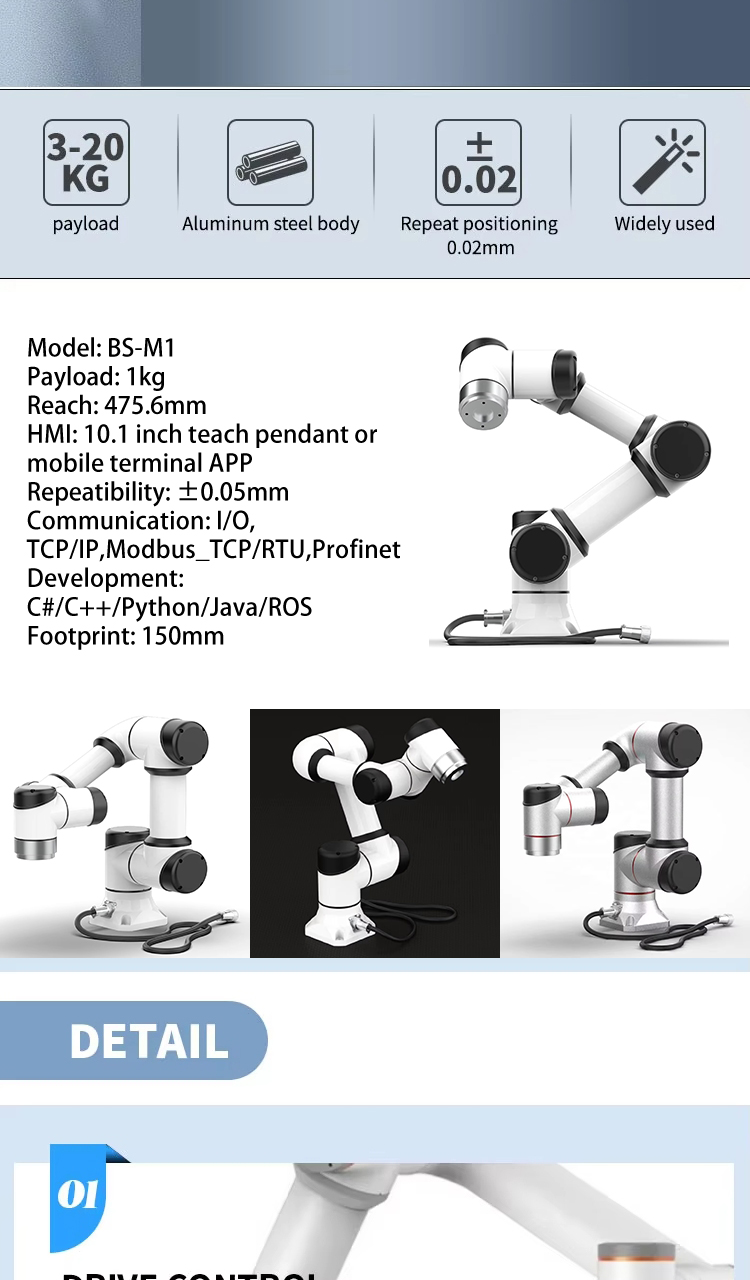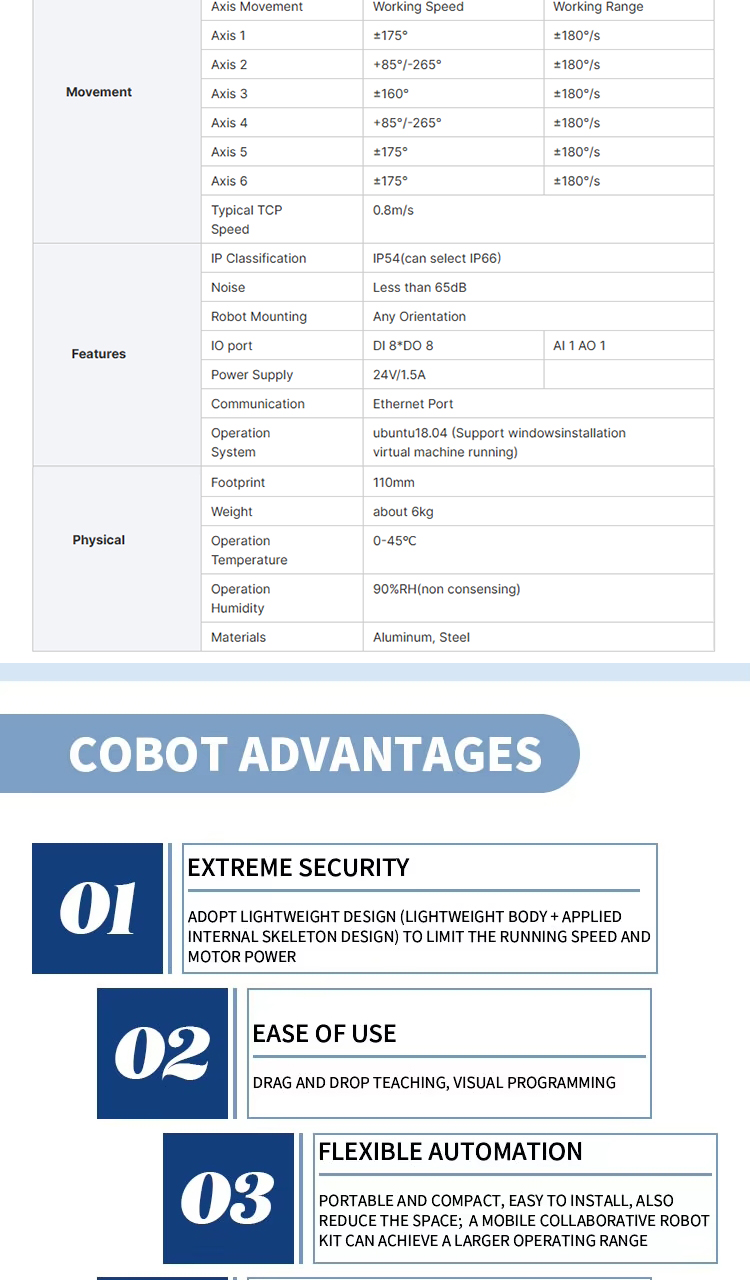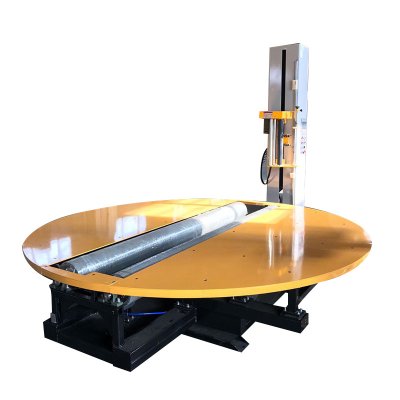Palletizing collaborative robot
1. Reduce labor costs: It can replace manual labor to complete heavy and repetitive palletizing work, reduce the company's dependence on labor, and reduce labor costs.
2. Equipment safety: It has functions such as overload protection and fault alarm. When the robot encounters an abnormal situation, it can issue an alarm in time and stop running to protect the robot equipment from damage, reducing the maintenance cost and downtime of the equipment.
3. Compact design: The structure is compact and occupies a small area. It can be installed and used in a limited space, especially suitable for production workshops, warehouses and other places with limited space.
4. Flexible deployment: It can be flexibly deployed and moved according to production needs, and can be switched between different production lines and workstations to improve the utilization rate of equipment and the flexibility of production.
5. Simple structure: The mechanical structure is relatively simple and the number of parts is small, which reduces the difficulty and complexity of equipment maintenance. And because the parts are highly standardized, they are easy to replace and repair, reducing the maintenance cost and downtime of the equipment.
6. Accurate positioning: Equipped with advanced sensors and control systems, it can accurately identify the position, shape and size of goods, and achieve accurate grasping and stacking. For goods with irregular shapes or large size differences, they can also be stacked accurately to ensure the neatness and stability of the stacking.
7. Human-machine collaboration safety: It has a complete safety protection mechanism and can collaborate safely with operators in the same workspace.
The palletizing collaborative robot is an efficient automation equipment specially designed for modern industry and logistics fields. It integrates advanced technology and has excellent palletizing capabilities and collaborative performance, bringing significant improvements to the company's production and warehousing links.
Model: BS-M1, Payload: 1kg, Reach: 475.6mm, Human-machine interface: 10.1-inch teaching pendant or mobile terminal APP, Repeat accuracy: ±0.05mm, Communication: Input/output, TCP/IP, Modbus_TCP/RTU, Profinet, Development: C#/C++/Python/Java/ROS, Footprint: 150mm
Axis movement: axis 1, axis 2, axis 3, axis 4, axis 5, axis 6, typical TCP speed, Intellectual property classification: IP54 (optional IP66), Noise: less than 65dB, Robot installation: any direction, 10 ports: from 8* to 8, Power supply: 24V/1.5A, Communication: Ethernet port, Surgical system: Ubuntu 18.04 (supports windows installation virtual machine running), Footprint: 110mm, Weight: about 6kg, Surgical temperature: 0-45℃, Surgical humidity: 90%RH (non-condensing), Material: aluminum, steel
Application industries: automobile manufacturing, mechanical processing, electronic manufacturing, building materials industry, cargo handling and palletizing, food industry, pharmaceutical industry


















